Banff National Park
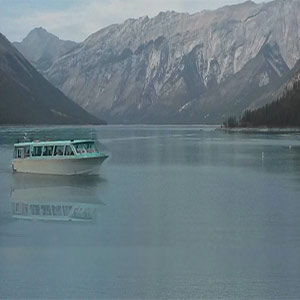

For those who are looking to combine adventure and excitement, an ideal destination would be Banff National Park, a World Heritage Site. Unforgettable water rafting or sensational zip line adventure in the Canadian Rockies, the challenge would be in deciding what to leave out.
Banff National Park was found when Canadian Pacific Railway construction workers stumbled across a cave of hot springs in 1883, on Alberta's Rocky Mountains, eastern slope. With humble beginnings of 26 square kilometer, Banff now spans almost 6641 square kilometers, with valleys, mountains, glaciers, forests, meadows and rivers. Banff is Canada's first and the world's destination National Park unparalleled in mountain scenery.
Millions flock to Banff year on year to marvel at the emerald waters of the Lake Louise and the gateway to it all, the Town of Banff. If the snow capped peaks and the glistening glaciers form one part of this amazing park, on the other side enjoy Canada's excellent Whitewater rafting, golfing, hiking, bird watching, mountaineering and skiing.
History of Banff - Canada's first National Park
In 1883 when Canada's first transcontinental railroad was completed, three railroad workers stumbled upon a series of hot springs. This is now called Sulfur Mountain. In 1885 after an ownership dispute, the springs and the surrounding areas were declared as Canada's first national park which gave birth to the National Park system. The Canadian Pacific Railway recognizing the tourist potential of the Canadian Rockies, in 1888 opened an elegant Banff Springs Hotel under the direction of William Cornelius Van Home before constructing a series of grand hotels. Soon Banff became famous as an international museum and tourist stopover.
The history and cultural heritage of this area is also captured in a number of museums, including the Whyte Museum of the Canadian Rockies, Banff Park Museum, Luxton Museum and the Cave and Basin National Historic Site. The boundaries of the park, as it appears today were drawn up in 1930 as part of the National Parks Act passed in the Canadian parliament.
Banff National Park for the adventure tourist
For over 130 years, Banff has provided unspoiled wilderness with mountain lakes like Louise combined with modern amenities. The mountain town of Banff offers a choice of accommodation. The tradition and history of this mountain town is well preserved and there are a number of museums and heritage sites.
Yet the allure of Banff town is its proximity to the park's incredible attractions. Trails, gondolas, ski areas and exciting heritage and well-kept wilderness secrets coupled with incredulous dining activities make the Banff National Park an outdoor hospitality destination par excellence.
Over 93 percent of the park has untouched wilderness. The most dominant feature of the park is the mountains, from which vistas branch everywhere. The ancient beauty of the Banff Park is no wonder then, part of the UNESCO's Canadian Rocky Mountain World Heritage site. Ancient monoliths some 45 to 120 million years old, and with the highest in the Park, Mount Forbes, at 11,850 feet boast their presence in this postcard perfect mountain Park.
Banff, the highest town in Canada rests at an elevation of 4540 feet and the hamlet of Lake Louise the highest permanent settlement in Canada. Among the several historic sites are the Castleguard Caves, the largest cave system in Canada with more than a thousand glaciers and glacier fed lakes such as Moraine Bow, and Peyto other than the famous Lake Louise.
The Banff legacy trail is a non motorized paved trail for walking, cycling and skating. This 16-mile trail runs along Trans-Canada.
The easiest way to get around Banff National Park is by vehicle and these are available in Calgary, Banff and Lake Louise. Bicycles are available for the sporty tourist who should exercise caution as this is mountainous terrain. A moped could also be rented out to explore the area around Banff. Guides can engage the visitors on a tour of the Park.
The most common wild life at this park is Bighom Sheep, Deer, Elk, Mountain goats, and Caribou. Moose is another elusive which is rarely spotted. Squirrels and marmots abound on the warm and fuzzier side of the park. Although these sightings are rare, keep in mind that this park is also home to black and grizzly bears, wolves, coyotes and mountain lions, or cougars. An occasional porcupine and beaver may also be seen, and bird lovers can watch grouse, bald eagles, and the Canadian goose.
Adventure Activity
Climbing the Canadian Rockies is one of the best rock climbing programs. Avalanche training, ice climbing, trekking, rock climbing and back country skiing are some of the indulgences that could be experienced by beginners and advanced climbers.
Single day or multi-day hiking and backpacking adventures in Banff are available. There are several natural trails within half an hour of Banff Township. As Banff is on a higher latitude, the scenery is four-seasonal. There are Gondolas – Banff Gondola and Lake Louise Sightseeing Gondola. Sunshine alpine meadows are suitable for hikes.
Banff offers unequalled golfing experience what with an 18-hole Stanley Thompson course, and a 9-hole tunnel mountain course. This spectacular Banff Springs Golf course is located on the Bow River at the foot of Mount Rundle and Sulfur Mountain.
One of the scenic locations on the Ice fields Parkway, about 40 kilometers north of the town of Lake Louise is the Peyto Lake which is considered one of the best views of Canada. The lake lies on the convergence of valleys and is surrounded by rich forests and mighty mountains. The shimmer of the lake is blue during summer months due to its mineral content being fed from the Peyto Glacier.
Banff National Park is home to several ski and snowboard areas. Sunshine is about eight kilometers off Banff with a peak of 2730 m. Lake Louise is about sixty kilometers and is the single largest ski area in Canada with 4200 acres of lift-accessed terrain on four mountains. Mount Norquay is about six kilometers north of Banff and is famous for its super steeps.
Staying safe at Banff
Statistically, one of the greatest threats for injury at the park is while driving through it. An occasional cougar and bear could attack the visitor. The danger of an avalanche also exists. Skiing out of bounds is not allowed. Elk moose and deer are also unpredictable and dangerous. It is advised to stay at least 30 meters away from elk, moose and deer. Wolves and coyotes can be detected on longer trails.
Some safety rules to follow while at Banff National Park:
- Use binoculars to see animals up close.
- Remain at least 100 m away from bears, wolves and cougars.
- Keep back at least 30 meters and space for sheep, elk, mouse and deer.
- Roadside wildlife can be viewed from the vehicle.
- Ask park staff about wildlife safety and how to handle wildlife.
Climate
The climate is generally mild during summers, with July the warmest month with an average temperature of 22 C. Although the mountains are snow covered year round, there is rarely snow at the highway in the summer. Whereas, in winter the average temperature drops drastically and January is the coldest month with temperature dropping to an average of -15 C. Snow can be seen at any elevation during winter and whatever be the season, the temperature will drop 1 C every 200m of elevation gained.
Shop, drink and eat at Banff
Go for a stroll alongside locals and travelers and discover a collection of shops, galleries and boutiques – some of the oldest departmental stores and clothing can be found here. In Banff recipes change according to the seasons. During Fall, squash and legumes are used whereas in spring, asparagus and mushrooms find their place and edible flowers and fresh fruits galore.
Reaching Banff
Canadian Trans Canada highway bisects the park east/west. Banff is about half hour from the Calgary Alberta and Golden British Columbia. There are several other ways such as Jasper Highway, Rocky Mountain House, Red Deer Alberta and Highway 93 from Rodium Hot springs and Cranbrook British Columbia.
There are regular scheduled coaches to Banff and Lake Louise departing from Calgary and points in British Columbia.
Air transport provides shuttle services from Calgary Airport to Banff and Lake Louise. Banff does have an airstrip but there is no commercial service. Vancouver international airport is about 12 hour drive to the west. There are short charter flights that operate tours over Banff National Park.
By train, the Rocky Mountaineer Vacations provides year round vacation packages including travel on the acclaimed Rocky Mountaineer rail journey.
Banff is open year-round although summer is popular for hiking, paddling, mountain biking and cycling among others things to do. And Fall is the best time for viewing the seasonal colors. The mountain landscape makes for incredible downhill and cross country skiing during winter. The ski season runs from November to May and is one of the longest in North America. But weather in the Canadian Rockies can change so quickly from a mix of sunshine, snow, wind and rain on a single day.
Top of the Page: Banff National Park
Tags:#Banff National Park
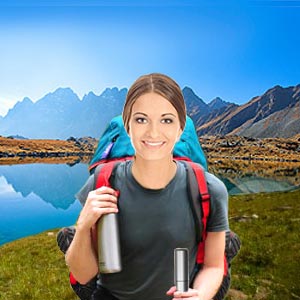 Recreation Guide
Recreation Guide Travel Plan
Camping Checklist
Vacation Condo Rental
Rental Travel Trailer
Yacht Charter
Cruise Travel Guide
Travel Insurance
Tipping Etiquette
Budget Vacation Tips
Winter Vacation
Spa Vacations for Women
Vacations for Single Women
Winter Resorts
Backpacking Holiday
Golf Vacation Package
Cheap Holiday Package
Low Cost flights
Budget Motels
American Destinations
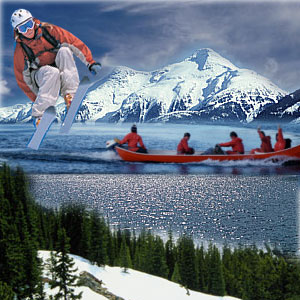 Banff National Park
Banff National Park Amelia Island Florida
Sanibel Island
Finger Lakes Trail
San Diego Attractions
Fort Lauderdale Travel
Orlando Florida Vacation
Colorado Vacation
Florida Keys
Maine Vacation
Travel to Salt Lake City
Travel to Newark
Fort Myers Travel
Tennessee Vacation
Alaska Adventure Travel
Yellowstone Vacation
Nags Head
Lake Tahoe Ski Resort
Grand Canyon Tour
Yosemite National Park
Ottawa Vacations
Summer Holidays in Montana
Adventure holidays
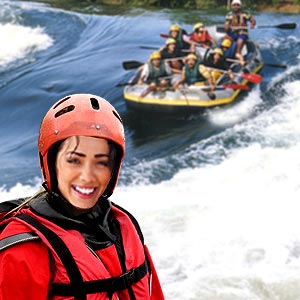 Ecotourism Holidays
Ecotourism Holidays Madagascar Travel Guide
White Water Rafting Holidays
Lake Titicaca Islands
Kayaking Trips
Travel Destinations
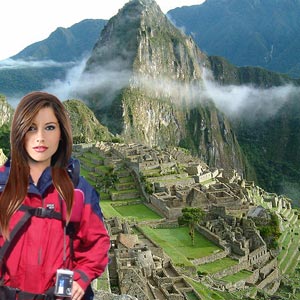 Palawan Philippines
Palawan Philippines Cameron Highland
Visiting Cayman Islands
Seychelles Vacations
Dominican Republic Vacation
Cartagena Colombia
Galapagos Vacation Packages
Machu Picchu Travel
San Juan Puerto Rico
Victoria British Columbia
Tenerife Holiday
Fiji Vacation
Fall Foliage Tour
Quebec Travel
Saltspring Island
Argentina Travel Guide
Jerusalem Tour
Petra Jordan
Via Dolorosa
Amsterdam Vacation
Bermuda Cruise
Halifax Tour
Niagara Falls Canada
Tropical Getaway
Mexico Travel Package
Hawaii Travel Package
Tahiti Vacation
Barbados Vacation
Cyprus Holidays
Egypt Holidays
Travel to Costa Rica
Family Vacation
All Inclusive Family Vacation
Vacation with Kids
Holidays with Pets
Beach Vacation
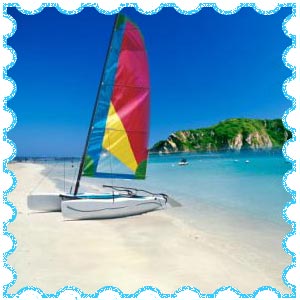 Laguna Beach Hotel
Laguna Beach Hotel Travel to French Polynesian Islands
Myrtle Beach Resort
Daytona Beach Florida
Panama City Beach Florida
Orient Beach
Sunset Beach NC
Bondi Beach
Australia Travel Destinations
Great Barrier Reef
Australia Cruise
Tasmania Australia
European Tour
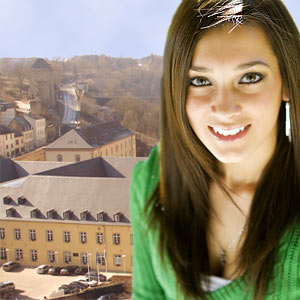 Mallorca Travel Tips
Mallorca Travel Tips Travel to Budapest
Jungfrau Top of Europe
Travel to Chamonix
Antwerp Tourism
Poland Travel
Turkey Travel Planner
Prague Travel Guide
Monte Carlo Monaco
Ireland Vacation
Pisa Italy
Florence in Italy
Croatia Beach
Lanzarote Canary Islands
Genoa Tour
Malta Holidays
Venice Vacation
French Riviera Vacation
Travel Package Portugal
Travel to France
Andorra Tourist
London Travel Package
Cardiff Tourist Information
Weekend Break in Scotland
Helsinki Finland
Liechtenstein
Scandinavian Cruise
Madrid Vacation
Belarus Tours
Luxembourg Travel Guide
Latvia Tourism
Estonia Vacation
Albania Tours
Bulgaria Vacation
Asia Holiday Destinations
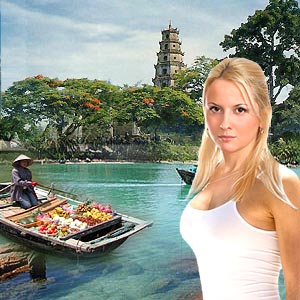 Laos Sightseeing
Laos Sightseeing Chocolate Hills
Guimaras Island
Borneo Eco Tours
Sightseeing Japan
Cambodia travel
Saigon Vietnam
Bhutan Travel
Macau Tour
Guangzhou China
Shenzhen China
Hong Kong Vacation
Lantau Island Hong Kong
Dubai Shopping Festival
Kuala Lumpur Tour
Singapore Tourism
Bali Indonesia
Phuket Thailand
Bangkok Vacation
Mauritius Holidays
Goa Holidays
Nepal Holiday
Maldives Resort
Top of the Page: Banff National Park
Popularity Index: 101,121

